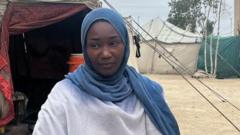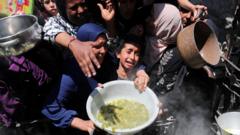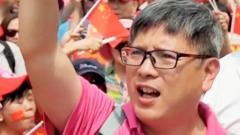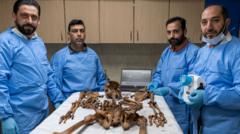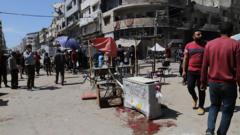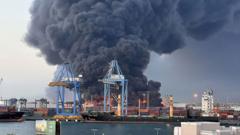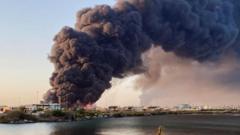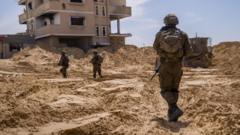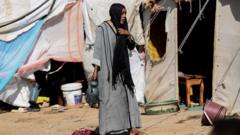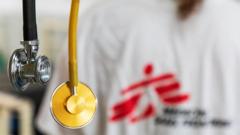As the Sudanese army celebrates its recapture of Khartoum, the city lies in ruins. Amid the destruction, residents find hope and resilience, commemorating Eid for the first time in two years while grappling with the traumatic impact of war and uncertainty about their future.**
Inside Khartoum: A City Scarred by War and Resilience**
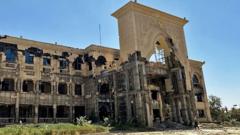
Inside Khartoum: A City Scarred by War and Resilience**
BBC reports on the stark aftermath of conflict in Sudan's capital, Khartoum, where the military's recent victory has paved the way for celebrations amid immense devastation.**
The once-bustling capital of Sudan, Khartoum, now resembles a ghost town as it sifts through the remnants of intense urban warfare. Following a rigorous six-month campaign, the Sudanese army has claimed victory over the Rapid Support Forces (RSF), marking a pivotal moment in the protracted civil conflict. The profound devastation left in the wake of this struggle tells a somber tale of a city's fall from a center of commerce and governance to a landscape of ashes and despair.
Our journey begins at the presidential palace, a strategic stronghold for the RSF. The interiors, which hosted official functions, are now strewn with rubble and looted remnants. Dusty chairs remain, untouched but for the grim specter of battle, while shattered glass carpets the floor beneath ragged chandeliers. Lasting scars mar the structure as drone strikes left their mark; blood stains on the steps act as a haunting reminder of the violence that unfolded here.
Among the celebratory soldiers who proclaimed victory during the recent Eid holiday, joy intermingles with the toll of destruction. Festivities unfolded within the palace as a local eatery provided a lavish feast, with soldiers hailed as heroes. However, the euphoria is tinged with the sorrow of a city severely battered by conflict. Buildings that once signified the heart of Khartoum stand charred, and the international airport lies in ruin, surrounded by wrecked aircraft and debris.
Navigating through the remnants of war, we came to St. Matthew’s Cathedral, one of the few places relatively untouched, yet still bearing marks of the conflict. Shell damage is visible, while the soldier on site shared tales of desecration during the RSF's occupation, amplifying the anguish felt by many.
Further inspection reveals broader implications of the conflict. Diplomats’ compounds display RSF slogans spray-painted across their walls, while neighboring streets echo with the horrors of war, evidenced by stray body parts and the ominous presence of unexploded ordnance.
Despite the violence that remains active in various parts of the nation, a renewed sense of normalcy is gradually emerging. For the first time in two years, residents adorned themselves to celebrate Eid, exchanging joy and memories of freedom reclaimed. Community kitchens have emerged as lifelines, helping those who survived the siege.
However, the road to recovery will be long and fraught with challenges. As voices of hope arise—optimistic about potential investments for reconstruction and rehabilitation—the looming uncertainties cast shadows over their desires. Individuals express concerns for their children’s traumas and the future of civil rights in a post-war landscape.
As Khartoum stands at a crossroads, the memories of hardship are fresh, yet potential for reconstruction lingers in the air. Citizens long for a return to stability while reflecting on the vitality that once enshrined their beloved city and the cultural heritage that may forever change.

